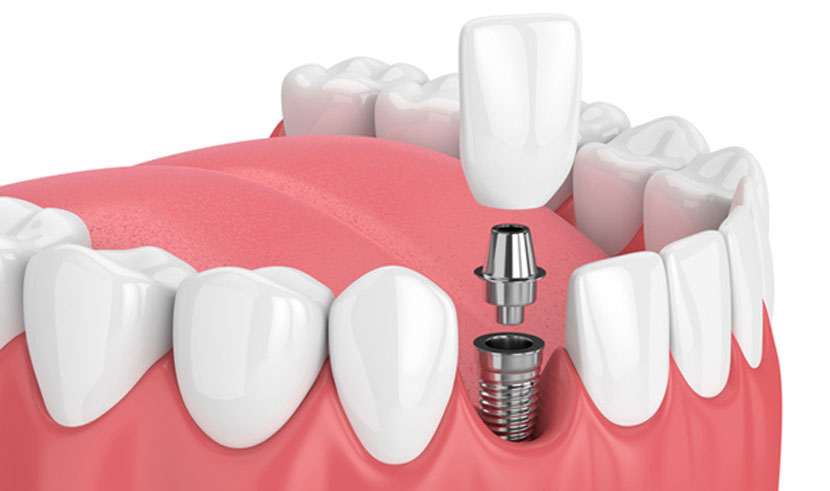 19 Mar 2022
19 Mar 2022
Implants: A long-standing solution to dental needs
Wearing a best smile on your face indicates the universal language of expressing love and kindness towards others. You may lose this smile, when your front tooth is lost due to trauma or cavity or due to weak support from the bone holding the teeth. At Thumbay Dental Hospital, we serve to get your best smile back forever with dental implants.
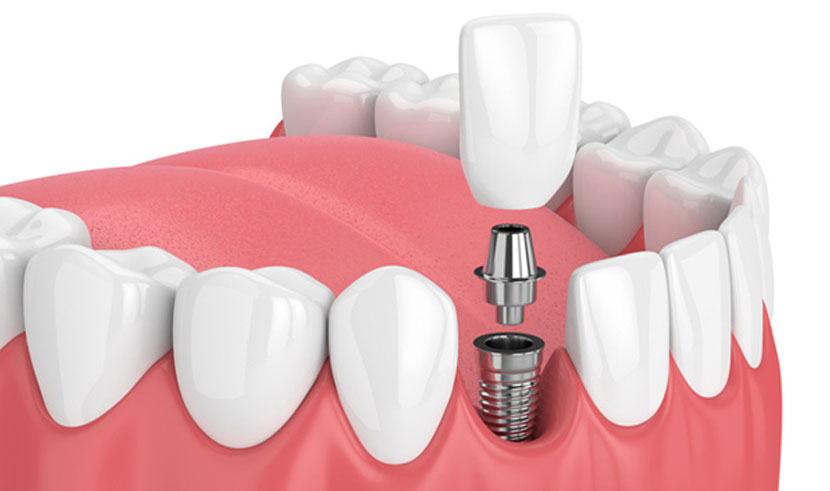
Dental Implants have a root component that is either made of titanium/titanium alloys screw or ceramic, and is embedded inside the jaw bone under local anesthesia. Once the firm and effective bonding of the implants with the bone is completed after a period of 3-4 months, the abutment is placed and is loaded with either a porcelain fused metal or zirconia crown. The implant then becomes fully functional like any other natural tooth.
Thumbay Dental Hospital is equipped with the most advanced systems of dental implants. We use FDA (US-Food and Drug Administration) approved Dental Implants for our patients. If you have a single tooth or all teeth missing We have solutions ranging from single implants, multiple implants to All On 4 a specialized and stable technique for patients who have all their teeth missing.
Benefits of dental implants:
When a tooth is extracted, a lot of changes in that area can happen. The bone in that region constricts over time. Also, your natural teeth close to that missing tooth will now try to move into this space, dental implants help to maintain bone integrity in the region of lost tooth.
Implants are easy to maintain with good oral hygiene.
Implants are the closest you can get to healthy, natural teeth. They allow you to confidently eat, smile, laugh, talk, play and enjoy all of your regular activities of everyday life without worrying about your teeth.
Dental implants are also a great option if you have a denture or partial denture that doesn’t stay in place. They can be used as anchors to help keep removable appliances where they’re supposed to be.
BY: Web Team
Magazine
COMMENTS: No Comments
 11 Mar 2022
11 Mar 2022
Medical Dermatology or Cosmetic Dermatology: Which One to Go For?
There are a lot of reasons why one might feel that it’s time for them to visit a dermatologist in Ajman. Some of the common issues could be sunburns, rashes, discoloration, or some kind of infection. Other issues might consist of treatments for aesthetic reasons or getting rid of stubborn fat or sagging skin. But for whatever reason you need to see a dermatologist, in every case, the big question remains what kind of dermatologist can help you out with your issue. Now, you must be thinking what is that supposed to mean? Your answer is right here!
Dermatology has main two branches-medical dermatology and cosmetic dermatology. And quite often it is noticed that patients are confused about the kind of skin specialist in Ajman they should visit. Through this post, we try to omit the confusion and help you distinguish between the two branches of dermatology.
Medical Dermatology: What does it mean?
Medical dermatology, as the name suggests, is the branch of dermatology that is mainly concerned with patients who are facing skin-related issues as a result of some medical condition. Now, these conditions could be affecting either your skin, hair, or nails. But apart from evaluating, diagnosing, and treating the conditions, dermatologists under this branch help to maintain healthy and glowing skin as well.
The best way to understand the whole thing is with the help of a simple example. Imagine you have a lot of scars on your face as a result of acne and you go for a cosmetic procedure like skin resurfacing to reduce the scars. In this case, your skin specialist in Ajman will have to provide you with some medications that will stop the reoccurrence of any acne, providing you with the healthy and glowing skin you desire.

Common Conditions and Treatments
1. Acne: In the case of acne, the dermatologist will examine the severity of it, and based on the diagnosis he/she will start the treatment. The treatment might include light therapy, medication, removing cysts, or laser treatment.
2. Dermatitis: Dermatitis is a term used to indicate skin conditions that cause inflammation or irritation of the skin. Some of the conditions could be blisters, eczema, and cradle cap.
3. Skin Infections: Skin infections can be caused by a number of microscopic organisms such as viruses, parasites, fungi, and bacteria. An experienced medical dermatologist will study the cause of the infection and prescribe medication to cure it.
4. Nail Problems: The common problems related to the nails could be black spots, discoloration, and separation. Most of these can be traced back to some or the other underlying health condition. But that is not something you need to worry about. Your dermatologist will be able to diagnose it.
5. Skin Cancer: Skin cancer can appear anywhere on your skin. Your skin specialist in Ajman will be able to remove the cancer cells and monitor you so that the cells do not reappear.
6. Hair Loss: Hair loss can be hereditary to a person. But there are other reasons too such as stress or hormonal changes that can cause it. A trusted dermatologist at the Thumbay University Hospital can find out the root cause of your hair loss and provide you with the right treatment.
Cosmetic Dermatology: What does it mean?
Cosmetic dermatology, also known as aesthetic medicine, is the branch of dermatology that focuses on improving the condition of your skin to reverse the effects of aging and give you youthful skin that is healthy and glowing. Patients who wish to have younger-looking skin usually go for such treatment. It is be noted that cosmetic dermatology isn’t about treating any kind of medical condition but only for cosmetic reasons and purposes.
Cosmetic dermatology can prove to be quite risky in some cases. But if it gets successful, it can have a significant impact on your confidence level. Since this branch of dermatology focuses more on the wants of a patient and not the needs, most insurance policies do not cover it. However, the popularity of cosmetic dermatology and the methods associated with it keeps on rising.
Common Treatments and Procedures
1. Laser Hair Removal: This procedure involves the use of a powerful source of heat and light to destroy the hair follicles so that the hair growth is reduced permanently.
2. Skin Exfoliation Treatments: Chemical peels, MiraPeel, dermaplaning, microdermabrasion, and physical exfoliation are all different types of skin exfoliation treatments. These treatments involve the removal of dead skin cells from the skin surface to improve the texture and tone of your skin.
3. Dermal Fillers: Fillers could be different forms like collagen, hyaluronic acid fillers, synthetic, and autologous. The process involves injecting fillers into the line and folds of the skin providing it immediate volume.
4. Non-Invasive Fat Removal: This procedure involves the use of cold temperature to eliminate the fat cells and treat the stubborn fat in the body.
5. Botox Injections: Injecting botulinum in the skin helps reduce wrinkles which are caused as a result of the repetitive contractions of the facial muscles. The toxin controls the release of acetylcholine which is responsible for the contraction of facial muscles.
6. Intense Pulsed Light: Intense Pulsed Light or IPL therapy involves the use of light beams of different wavelengths to encourage the production of collagen. This therapy is used to control wrinkles, sunburns, vascular spiders, small moles, and expression lines.
The Conclusion
Both medical and cosmetic dermatology are aimed towards providing you with healthy skin, hair, and nails. The only difference that could distinguish the branches from one another is the fact that one of them (medical dermatology) caters to the needs of the patients and the other one (cosmetic dermatology) to the wants of the patients.
Issues that cosmetic dermatology solves are more about acquiring personal confidence and a more attractive appearance. Medical dermatology on the other hand solves the issues related to the health of the skin, although it boosts the confidence and the overall appearance of the patient as well.
To know more about what treatment or procedure could solve your skin-related issues, contact our dermatologist in Ajman or book an appointment now!
BY: Web Team
Magazine
COMMENTS: No Comments
 03 Mar 2022
03 Mar 2022
The Covid-19 Delta Variant: What You Need to Know
With widespread vaccination and SOPs in place, many of us were starting to relax about the pandemic. However, when news about the Delta variant—a highly contagious SARSCoV-2 virus strain was announced, it sent many of us back into fear mode. Dr. Baljinder Singh, Head of the Emergency Department clarifies the facts about this variant and how we can take precaution.

Overview
Delta is described by The Centers for Disease Control and Prevention (CDC) as more transmissible than the common cold and influenza, in addition to the viruses that trigger MERS, SARS, and Ebola. Dr. Singh explains, “Delta is the name given to the COVID-19 variant that was first detected in India in December 2020. It is believed to be 50 to 60 percent more infectious than the original and Alpha strain, as per British Authorities.”
Symptoms
According to Dr. Singh, the Delta variant may have slightly different symptoms as compared to the original strain and the Alpha variant because people may have antibodies from a previous infection or vaccination and due to the mutation of the virus. “This variant has proven to be more easily transmissible,” he says, and in fact, the Deltavariant COVID -19 has more of the common-cold like symptoms, including sorethroat, sneezing, and fever, but cough and loss of smell are not that common. A headache and runny nose are common, he tells, and people may think they have a common cold with headache and not COVID, thereby unknowingly spreading the infection. Other symptoms include hearing impairment, gastrointestinal symptoms like nausea, vomiting and diarrhea and blood clots.
The problem
The Delta variant is more worrisome because the viral load is around one thousand times higher than previous variants as per a Chinese study, points out Dr. Singh. “There is around 35 percent increase in hospitalizations due to the Delta variant in the US as per the CDC and the majority of the hospitalizations and COVID-19 related deaths are occurring in the unvaccinated people.” Protection from COVID-19 infection is the same and includes following proper hand hygiene, wearing masks in crowded spaces, and keeping safe distances. Seeking medical advice if any symptoms arise and to go for full vaccination as per your local medical guidelines.
Screening and treatment
There is no special test for the Delta variant and the COVID PCR test is still used to test, he says, but the positive COVID PCR tests can undergo genetic analysis that can confirm if it is the Delta variant.
The treatment is the same regardless of the infectious variant. “Mild to moderate infections are managed at home with symptomatic treatment and severe infections require hospitalization,” he says, with certain antivirals and monoclonal antibody medications administered for moderate to severe infections along with corticosteroids, anti thrombotics, high-flow oxygen, and ventilation. H
BY: Web Team
Magazine
COMMENTS: No Comments
 03 Mar 2022
03 Mar 2022
Prediabetes Is on the Rise in the UAE
While prediabetes is not high enough to be considered type 2 diabetes, unless some immediate lifestyle changes are made, it likely will develop into type 2 diabetes. HEALTH speaks with Dr. Ihsan Al Marzooqi, Emirati Digital Therapeutics entrepreneur to learn more.

Defined
According to Dr. Al Marzooqi, prediabetes is a serious health condition caused by the body not responding in the normal way to insulin produced by the pancreas. “Insulin is a naturally occurring hormone that lets blood sugar into cells to use as energy,” he says, and prediabetes usually occurs in people who have some insulin resistance or whose cells aren’t making enough insulin to keep blood glucose within the normal range. A prediabetic patient’s blood sugar levels are higher than normal, but not yet high enough to be diagnosed with type 2 diabetes. He adds, “Eventually, without enough insulin, the extra glucose stays in the bloodstream and over time can develop into type 2 diabetes.”
In the UAE
With no clear symptoms in the early stages, he points out that prediabetes can go years without ever being detected and it’s currently affecting around 1.2 M people in the Emirates. “Prediabetes is rising in the region and the number of people impacted is alarming,” he tells, and this silent health crisis is affecting almost 15 percent of the UAE’s population; it’s most prevalent among UAE nationals, with around 19 percent of Emiratis and 15 percent of expatriates living with the condition.
Risk factors
Individuals over age 30, who are overweight, have a relative with type 2 diabetes, have a family history of hypertension, cardiovascular disease, or elevated blood fats and who are physically active less than three times a week, are those who are most at risk and should be screened as per the UAE guidelines, explains Dr. Al Marzooqi. “In some cases, the disease only reveals itself and its long-term implications when patients’ need urgent medical attention.
Dangerous repercussions
Those unaware they are living with it could be leaving it too late to treat and end up with a life changing chronic condition and serious and long-lasting health problems, he says, warning the community that prediabetes almost always leads to type 2 diabetes and those with the condition are at increased risk of heart disease and stroke if it continues to be untreated. Prediabetes shows very little symptoms until it is in its advanced stages; therefore, it’s recommended that those who are most at risk should get tested.
The good news
The good news, he tells, is that prediabetes is reversible, type 2 diabetes is not, although it can go into remission, so proactivity in the treatment of this condition is critical. “There are two ways of testing, first is to do an informal assessment of risk factors, usually best for asymptomatic adults, or the second option is to do a blood test,” he explains. “The key to reversing prediabetes is really all about education on the lifestyle choices that are needed and increasing awareness about how the foods we eat and the levels of physical activity we partake in, can dramatically impact our health.” H
BY: Web Team
Magazine
COMMENTS: No Comments
 02 Mar 2022
02 Mar 2022
Staying Breast Aware
With October being officially recognized as ‘Breast Cancer Awareness’ month, HEALTH speaks with consultant breast surgeon Dr. Rita Daaboul to learn more about the disease and how women can make themselves more breast aware.

Very early signs
The earliest signs of possible breast cancer are only picked up on screening tests, explains Dr. Daaboul. “These include microcalcification changes on a mammogram, or a small growth seen on a mammogram, or breast ultrasound which may as yet be too small to detect by touch.”
Self-breast exam and why it matters
According to Dr. Daaboul, it is recommended that every woman should self-examine her own breasts at least once every two months, preferably after her menstrual period, as that is the time when the breasts are the least lumpy and the least tender. She elaborates, “The idea is that over time, the woman would learn what her breasts normally feel like, so that if ever there is any change from the normal, she can recognize this early and seek a consultation with a breast surgeon for further professional assessment, as soon as possible.”
To check the breasts, the woman should look at her breasts in the mirror and then feel her breasts for lumps. “When checking the breasts in the mirror, she should look for any changes in the size or shape of the breasts, any dimpling or puckering or any skin changes, and also anything that may be different about the nipples,” she tells, and she should then feel her breasts at first standing up, and then lying down, especially if there are any concerns. She advises that the woman should use her flattened fingers to feel each part of the breast. This can be done in circles, all around the breast, in clockwise fashion, and lastly to feel the central area of the nipple.
Risk factors
In terms of age, Dr. Daaboul points out that the older a woman gets, the riskier it is to develop breast cancer. “The incidence of breast cancer is 1 in 8 women over their lifetime,” she says, while worldwide, the riskiest age is between 50 and 70 years of age. However, in the UAE, younger women tend to develop more advanced breast cancer, for an as yet unknown reason. As such, she recommends screening should begin earlier than in Western nations. “A woman is recommended to start mammographic screening from 40 years of age, and for a mammogram to be performed every 2 years.”
The latest treatment modalities
The most common treatment for breast cancer, reveals Dr. Daaboul, in simplified terms, is a combination of treatments which include surgery, chemotherapy, radiotherapy, hormonal treatment, and other biological treatments. “This is why breast cancer is treated by multiple specialists that discuss cases together and treat the patients’ in what is called a multidisciplinary team,” she says.
Lifestyle tips for women
While everyone has a certain degree of susceptibility to breast cancer, there are some straightforward lifestyle factors we can all undertake to lessen and avoid the risks, including:
Diet
Eat a healthy diet, rich in vegetables, fruit and natural, high-fiber whole foods. Avoid bad fats, red meat, and highly processed and junk foods.
Weight
Maintain healthy weight, especially as you approach old age.
Chemicals
Avoid toxic chemicals both at home and work.
Exercise and activity
Undertaking a regular exercise regime will certainly benefit overall health. Studies show that moderate weekly physical activity reduces the risk of breast cancer by around 20 percent.
Adequate vitamin D and sun
exposure.
Early pregnancy and breastfeeding is a proven preventative.
Mental health
Maintain a positive outlook which is proven to boost the immune system and works in both prevention and in better outcomes in those who are fighting cancer. H
BY: Web Team
Magazine
COMMENTS: No Comments
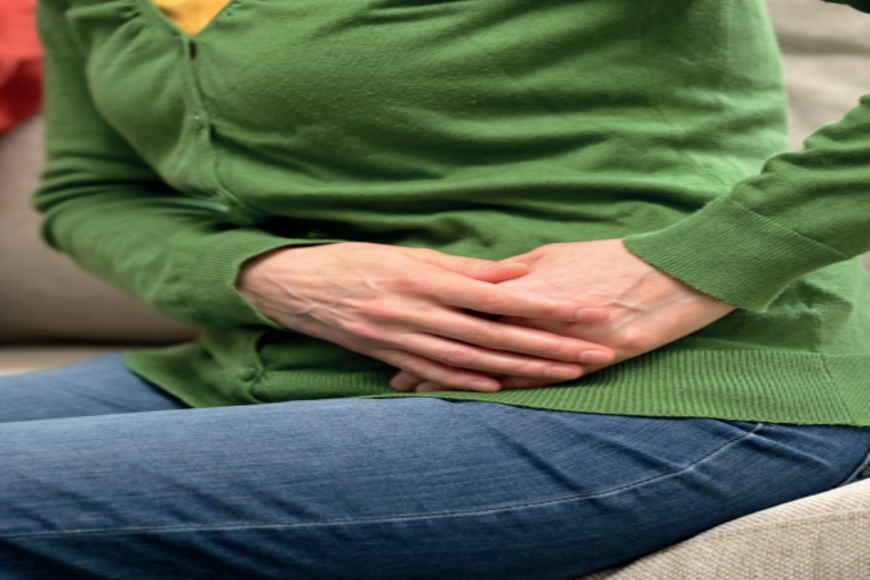 23 Feb 2022
23 Feb 2022
Taking a Holistic Approach to Polycystic Ovarian Syndrome
With the influx of additives, hormones, and chemicals hidden in our food along with a sedentary lifestyle, polycystic ovarian syndrome is now becoming increasingly common, even in younger women. For a different approach, Khadija Kapasi, clinical dietitian/lifestyle expert instead focuses on mind-body medicine and lifestyle to manage PCOS.

PCOS defined
Polycystic ovary syndrome (PCOS) is a common condition that affects how a woman’s ovaries work, explains Kapasi. She elaborates, “If you have at least two of the following symptoms, you may be diagnosed with PCOS: irregular periods – which means your ovaries do not regularly release eggs (ovulation).” Also, excess androgen (male hormones) which is high levels of male hormones in your body, which may cause physical signs such as excess facial or body hair. “Or polycystic ovaries, when the ovaries become enlarged and contain many fluid-filled sacs (follicles) that surround the eggs,” she explains.
The approach
Maintain a healthy weight: maintaining a healthy weight can help decrease insulin resistance, regulate your period, and reduce your risk of conditions associated with PCOS. If you’re lean then weight gain or meeting the ideal body weight will be helpful here.
Balance your exercise
Exercise is important for maintaining a healthy weight, says Kapasi. “But too much exercise can disrupt your hormones; best are gentle, low impact exercises like yoga or Pilates which can be practiced for longer durations.” Swimming and light aerobics are also recommended.
Practice good sleep hygiene
Sleep affects your stress levels and helps regulate cortisol to balance your hormones, tells Kapasi. “But sleep disturbances are twice as common for women with PCOS.” To up your sleep hygiene, she advises to aim for 8 to 10 hours of sleep per night, establish a regular bedtime routine, avoid stimulants and rich, fatty foods before bedtime.
Reduce stress
Reducing stress can regulate cortisol. “Many of the aforementioned strategies mentioned above, such as yoga, getting enough sleep, and cutting caffeine, can contribute to lower stress levels,” she advises. “Taking walks outside and creating space in your life for relaxation and self-care can also reduce levels of personal stress.”
Limit or avoid endocrine disruptors
Endocrine disruptors are chemicals or ingredients that interfere with or block your body’s natural hormonal reactions. Some endocrine disruptors mimic female and male sex hormones, confusing your reproductive system. This, she says, can increase your risk of PCOS symptoms. They’re often found in canned foods, soaps, and makeup. Common endocrine disruptors include: dioxins, phthalates, pesticides, BPA, and glycol ethers. H
A holistic approach
Contraceptive pills and diabetes medications (which combat insulin resistance, a PCOS symptom) can help rectify the hormone imbalance and improve symptoms, reveals Kapasi. She prefers to understand the root cause of the condition with the help of a qualified professional and treat it accordingly. “What we need to ensure is that we have the four verticals of health kept together as they are interrelated and can nourish and flourish women’s health,” she tells. These are your diet, exercise, sleep, and mental health. A good balance of these four verticals can help regulate the hormones and menstrual cycle.
BY: Web Team
Magazine
COMMENTS: No Comments
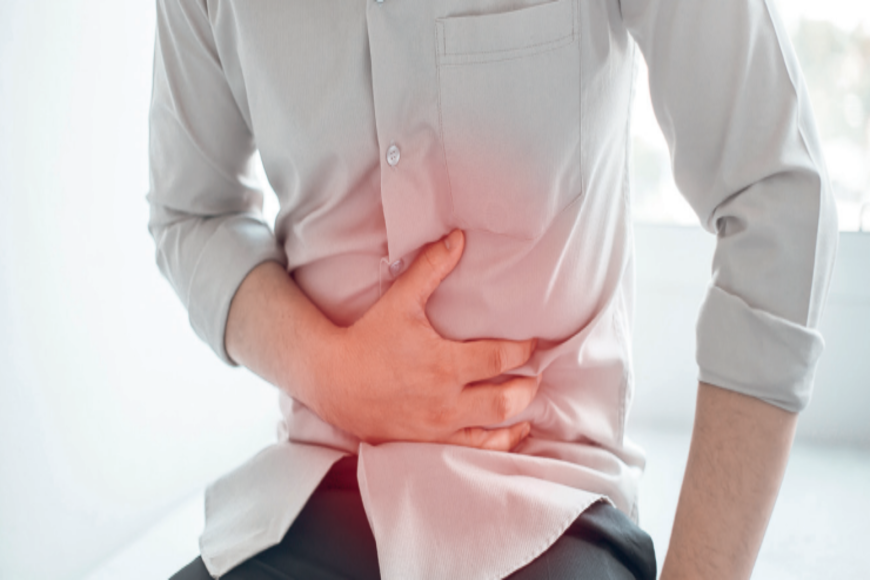 23 Feb 2022
23 Feb 2022
Stress and Your Digestion:a Closer Look at Peptic Ulcers
From work challenges to a stuck relationship, when stress and anxiety hit an all-time high and are not addressed in time the right way, it can trickle down into our digestive system, resulting in an ulcer. The good news is that it can be easily treated with medication and lifestyle modification. As HEALTH investigates.

What it is
According to Dr. Thomas James, Gastroenterologist, a peptic ulcer is erosion in the mucosa lining due to an increase in stomach acid. Basically, the lining of your stomach and first part of your small intestine, known as duodenum, have a layer of mucus that protects them from the acid which is produced by your stomach to help you digest food.
Different types
There are two different categories of peptic ulcers, he explains, one is duodenal and the other is gastric classified according to its location in the body. “The duodenal ulcer is found in the first part of the small intestine of the stomach and a gastric ulcer is located in the mucous membrane of the stomach.” While duodenal ulcer is more common, both are triggered by food, stress, and lifestyle.
Symptoms
The most common symptom, says Dr. James, is an aching of pain in the upper abdomen, a feeling of indigestion, hunger like pain, and vomiting. While the symptoms are the same for both types of ulcers, a key difference is the burning pain accompanying a duodenal ulcer which is caused by an empty stomach while gastric ulcer patients instead exhibit pain after eating.
Causes
An ulcer, he elaborates, is essentially caused by an increase in acid production which may be exacerbated by several factors. He adds, “One is Helicobacter pylori (H pylori) infection which is responsible for 60 percent of gastric ulcers and 90 percent of duodenal ulcers.” While H pylori is a bacterium that is commonly found in the stomach, the vast majority of people infected have no symptoms and will never develop problems. However, H pylori is capable of causing a number of digestive problems, including ulcers. Usually an ulcer will take a few months to heal, but may recur from habits, says Dr. James. “Overall lifestyle modification is the most important form of prevention and treatment also.”
Specific treatment
Acid secretion can be helped by diet modification, consuming meals on time, smoking cessation, and especially stress modification. With regards to medication, he explains that powerful proton pump inhibitors known as PPI are now being used effectively to provide short-term (two to eight weeks) treatment for ulcers in the stomach and in the upper small intestine, which can block more than 90 percent of stomach acid production. Also, treatment of H Pylori infection usually leads to clearing of infection, relief of symptoms, and eventual healing of ulcers. “Recurrence of infection can occur and retreatment may be required, if necessary with other antibiotics,” he says, but the treatment is targeted at eradicating the bacterial infection; the ulcer then heals and relapses are prevented.
Work on stress
Get a good amount of sleep: A proper amount of sleep helps relax and recuperate the mind and body, with the rest helping to reduce some of the ill-effects of stress.
Exercise
Exercising helps keep the body fit and helps release endorphins that could potentially help mitigate some of the more physical and even mental effects of stress.
Maintain a strong social network
Having a strong network of support and care can also help when feeling stressed.
Cultivate a positive mindset
Having a positive mind-set makes tackling stress easier than doing so with a pessimistic attitude.
Write a fun list
Take time out to write down a list of things that you love doing. Then when you are feeling down, you can consult your list and depending on how much time you can manage, put something that you love doing into the day. H
(Credit: www.experiencelife.com)
BY: Web Team
Magazine
COMMENTS: No Comments
 22 Feb 2022
22 Feb 2022
What Makes Male Depression Different
There is a stereotype of what depression looks like. We believe it has to be lots of crying, feelings of worthlessness, reduced appetite, excessive sleeping, isolating and being low all the time. To clarify, Jyotika Aggarwal, DHA Licensed Clinical Psychologist in Dubai discusses the red flags of male depression.

Facts versus stereotypes
According to Aggarwal, there is a stereotype of what depression looks like. “We believe it has to be lots of crying, feelings of worthlessness, reduced appetite, excessive sleeping, isolating and being low all the time.” While these are true and an important part of depression, for men, she explains that depression can look very different and this is the very reason why it may often be missed. She elaborates, “In men, it may manifest with symptoms like increase in fatigue, increased irritability and anger, sometimes they may become abusive in nature, loss of interest in work or hobbies, and difficulty in falling asleep.” Research also suggests that men use more substances, possibly as a form of self-medication. This can hide the symptoms of depression, making it harder to detect and treat effectively.
Less likely to reach out and seek help
Research suggests that men are not likely to accept their symptoms as depression hence, less likely to accept or seek help, points out Aggarwal. “Men find it hard to admit that they are going through any sort of difficulty let alone mental health concerns,” she says, and men are usually uncomfortable with any sign of weakness within themselves and may be afraid of being judged as a lesser man. Culturally, men are also not taught how to respond to their feelings of negativity, discomfort, or feelings of being low. “They believe they don’t even need to learn and can figure out a way to deal with this.”
Societal and cultural expectations play a role
Society and cultural beliefs also play a large role in this, she suggests. “Men, from time immemorial are required to be ‘strong’, which in turn pushes them to suppress any emotions that make them vulnerable,” she says; they are told from childhood ‘boys don’t cry’, and as they grow older, they are told to ‘get over it’. A manly framework is culturally depicted by the elders, explains Aggarwal, and the men have to abide by it. “They get so stuck to this reality that the world has built for them, that they may lose sight of their own emotional difficulties,” she says. “Many cultures associate respect with being manly and those men, who seek help often or may show an emotional side, are often judged in a negative light and not seen as reliable.” Men greatly fear such rejection and judgment, thus making it harder for them to seek help for their depression and anxiety.
How depression impacts men
When depressed, men’s daily life and the way they process situations changes, she says. “It can interfere with their productivity, negatively impact their relationships, and have sudden changes in their eating and sleeping patterns,” she says, and they are likely to be more on the edge, snap faster, and feel more anger. They are internally upset with themselves for not feeling ‘normal’ and feeling emotional discomfort, hence any small incident or conversation can provoke them. “In trying to tackle this situation, men may start avoiding family situations, become workaholics, start controlling, and become abusive in relationships,” she tells.
Expert advice
Aggarwal points out that the most important thing to remember is we are all human. “We all need support and compassion sometimes and we must not let external, dogmatic thoughts rule us to a point, that it becomes harmful for us,” she says, reminding us that it’s important to open doors for healthy and meaningful actions which help a person live their best life. H
BY: Web Team
Magazine
COMMENTS: No Comments
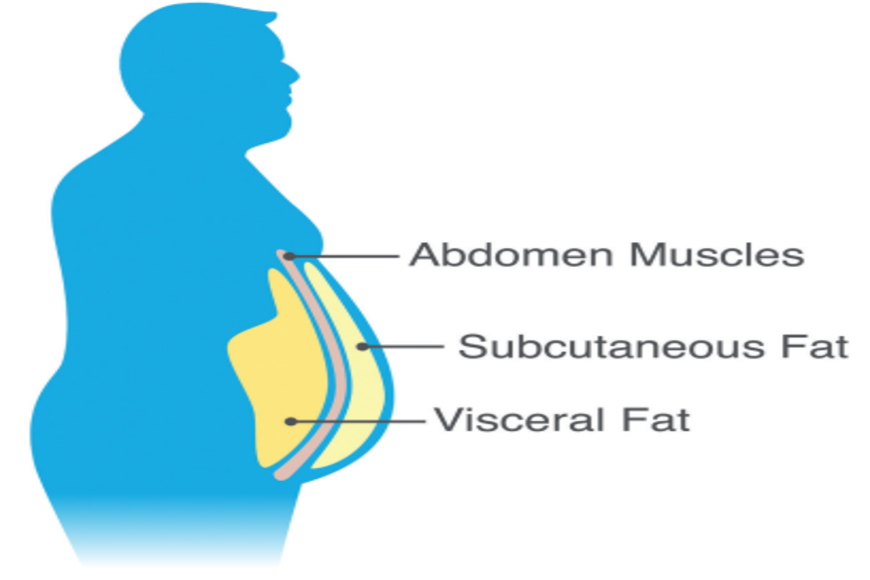 17 Feb 2022
17 Feb 2022
Shaking Up Your Visceral Fat Once and for All
Into the new year, many of us are making goals to lose weight. More specifically, visceral fat is not only dangerous, but it can trigger multiple health issues if not tackled in time. To learn more, HEALTH meets with Bryan Serrao, Personal Trainer at Body & Soul Health Club who provides the facts about this common problem.

What is visceral fat?
Visceral fat or belly fat, explains Serrao, is the fat within the abdominal cavity surrounding the internal organs. He elaborates, “Our bodies need some fat for its energy reserves, but our modern day lifestyles do not have the physical workload our bodies have been built to endure,” he says, and this in turn, leads to a surplus of fat especially around the tummy and thighs.
Why it matters
According to Serrao, scientific studies have shown that visceral fat is directly linked with heart disease, Alzheimer’s disease, type 2 diabetes, high blood pressure, and high cholesterol. It also raises the risk of stroke. He adds, “Researchers speculate that visceral fat creates an increase of certain proteins that inflame your body’s organs and tissues and ultimately narrow your blood vessels. In turn, this can trigger blood pressure to rise which can trigger other health issues.
How to measure it
A challenge about visceral fat is that there’s no way to ascertain how much visceral fat there is and where it’s concealed in the body without the use of highly specialized imaging tests. “The good news is these tests are rarely required and instead, there is a simple method to obtain an approximation,” says Serrao. “One is by the waist size; simply wrap a measuring tape around your waist over your belly button, ensuring you are not holding in your stomach.” In women, 35 inches or more is an indicator of visceral fat, while in men, it’s 40 inches. He warns that this method is quite rudimentary, especially if you’re a very large sized person. “And if you’re of Asian descent, the benchmark for visceral fat drops to 31.5 inches for women and 35.5 inches for men.”
Causes for the increase in visceral fat with aging
In simple words, Serrao points out that a calorie surplus diet is what causes visceral fat. “When the body is not burning the calories that are consumed, it stores the excess energy in the form of fat,” he says. “As our body ages, the metabolism rate—the rate at which food is converted into energy—gets slower and slower.” Age also plays a major role as there are hormonal changes which regulate important hormones. Also, stress is one of the underlying causes of excessive visceral fat. Stress causes the body to release a hormone known as cortisol, which increases how much visceral fat a person’s body stores, he explains.
The challenge in shedding visceral fat
There are two main types of fat, brown and white, explains Serrao. “Brown is considered as the good fat and is found in the front and back of the neck and upper back,” he says, while white fat is most prevalent in the body and has a number of roles that include temperature regulation, energy storage, protection of organs, and to protect the neuromuscular system. “Visceral fat falls in this category,” he says, and visceral fat is the most stubborn type of body fat as it is one of the last energy stores. The body is therefore programmed to hold onto visceral fat for as long as possible. “It is this reason that shedding this fat requires dedication, motivation, and patience as it needs to be defeated, not just burned.”
Exercises for visceral fat
Cardio, he explains, remains a popular choice. “However, just like diet, exercise also needs to be balanced and therefore, strength training/resistance/weight training should never be compromised,” he concludes. H
BY: Web Team
Magazine
COMMENTS: No Comments
 15 Feb 2022
15 Feb 2022
Eating an Anti-Cancerous Diet
A healthy lifestyle can reduce the risks of certain cancers and research indicates that many types of cancers are linked to unhealthy eating patterns and a sedentary lifestyle. Here to explain more, Dietician Fahmida Jafri reveals how to incorporate a diet that may just help reduce your risk of cancer.

What it means
To eat healthy and to avoid the risk of cancer, Jafri recommends that an individual should maintain a healthy weight within normal BMI range. “There should be more whole grains, fresh vegetables and fruits included in the diet as well as a reduction in sugary, processed foods,” she says, as well as the inclusion of plant proteins, healthy fats, and fiber rich foods in the daily diet.
Not limited to what we consume, she urges regular physical activity. “Keep yourself active; get involved in outdoor sports, walking, jogging or swimming at least three times a week, minimum one hour per session,” Jafri explains. “Also, the best lifestyle includes a good sleep cycle, no dependencies, less stress, and good rest.”
Specific foods
According to Jafri, non-starchy vegetables, whole fruits and whole grains are linked with a lower cancer risk. She elaborates, “It is believed that the pigments in vegetables and fruits are the most protective against cancer. So enjoy a variety of these foods as they are often rich sources of a variety of nutrients.” Fill half your plate with vegetables and fruits, and make at least half of your grains whole grains. Focus on the colorful fruits and vegetables such as eggplant, broccoli, kale, squash, oranges, kiwi, and so on, she says, to gain maximum benefits from their anti carcinogenic properties. “Many fruits and vegetables have cancer-fighting potential; for example, lycopene, a phytochemical found in cooked tomatoes and tomato products, has been shown to slow the growth of breast, lung, and endometrial tumors and to reduce prostate, stomach, and pancreatic cancer risks.”
The protein debate
Protein is the nutrient of importance for immunity and sustained health, she tells. “However, people recognize animal based protein with less importance given to plant proteins; both types have their own advantages.” To avoid inflammation and risk of cancers, it is strongly recommended to include plant proteins as 50 percent of your total protein intake. Research indicates a link between the consumption of red meat and processed meat to colon and other cancers, she says, so it is wise to choose lean meat over processed meats, reduce the portion size/frequency and importantly, include plantbased protein in the form of kidney beans, lentils, chickpeas, tofu, tempeh, and so on.
Good fats
The American Cancer Society says high saturated-fat diets are associated with an increased risk of colon, rectal, prostate, and endometrial cancers. They also state that the consumption of red meat has been linked to colon and prostate cancers. And gram for gram, fat has more than twice the calories of carbohydrates and protein, meaning excessive amounts is likely to cause weight gain. Instead, Jafri urges to consume fish two to three times a week in order to replace the high in saturated fat meat products. “Choose oils rich in MUFA, low-fat dairy and products free of trans-fats to avoid inflammation,” she notes, and include ground flaxseeds which contain soluble fiber, alpha linolenic acid (a form of healthy omega-3 fatty acid), and are the richest source of lignans (phytoestrogens that function like antioxidants).
Anti-cancerous diet checklist
- Strive to eat 10 servings (about half cup is a serving) of fruits and vegetables a day, choosing carotene-rich produce like carrots and cantaloupe, dark green vegetables, cruciferous vegetables, tomatoes, and citrus when possible.
- Broccoli, kale and Brussels sprouts contain sulphorane which a powerful antioxidant.
- Foods such as broccoli, berries, and garlic showed some of the strongest links to cancer prevention.
- Strawberries and raspberries are rich in antioxidants such as vitamin C and ellagic acid, a phytochemical.
- Spinach is rich in lutein and zeaxanthin, carotenoids that remove unstable molecules called free radicals from your body before they damage it. They’re found in spinach and other dark green leafy vegetables, and some studies show they could protect against cancer of the mouth, esophagus, and stomach. H
BY: Web Team
Magazine
COMMENTS: No Comments

